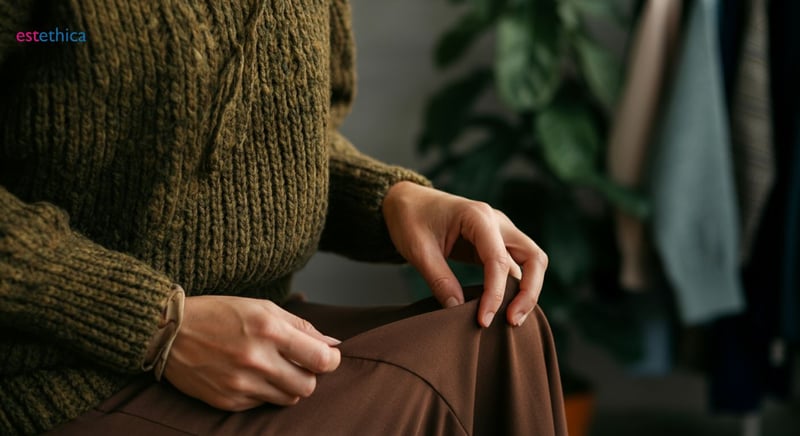Discover estethica: Embrace Sustainable Fashion Now
Unveil the potential of sustainable fashion with estethica. Step into eco-friendly clothing that defines style and ethics.
Welcome to the world of sustainable fashion! As the global consciousness shifts towards environmental responsibility, the fashion industry is making bold strides to embrace an eco-friendlier ethos. In this guide, we delve into the essence of sustainable fashion, offering practical insights and highlighting innovative trends. Explore how ethical fashion brands like estethica are setting the standard, while learning how you too can make greener choices without compromising on style. Join us as we spotlight the pioneers of this movement and inspire you to make your own sustainable fashion choices today.
Understanding the Core of Sustainable Fashion
Exploring the Principles of Sustainable Fashion
Sustainable fashion is a transformative movement aimed at reshaping the fashion industry to prioritize ecological integrity and social justice. This approach emphasizes the use of eco-friendly clothing materials, ethical production practices, and a focus on the entire lifecycle of garments. The rise of sustainable fashion is a response to the environmental concerns posed by fast fashion, which prioritizes mass production and consumption with little regard for ecological impact.
Key Elements of Sustainable Fashion
- Use of organic clothing materials that reduce environmental harm.
- Adoption of slow fashion principles to minimize waste and overproduction.
- Support for ethical fashion brands that ensure fair labor practices.
By understanding these core elements, consumers can make informed choices that contribute to a more sustainable and ethical fashion industry. For instance, choosing garments made from organic cotton or recycled materials can significantly reduce the carbon footprint of one's wardrobe.
Steps to Embrace Sustainable Fashion
- Research and identify ethical fashion brands committed to sustainability.
- Opt for eco-friendly clothing materials such as bamboo or hemp.
- Support local sustainable fashion stores to reduce transportation emissions.
Embracing sustainable fashion not only benefits the environment but also supports a fairer and more equitable industry. By making conscious choices, individuals can contribute to a positive change in the fashion landscape. For more insights on sustainable practices, you can explore estethica's expert insights.

Choosing Eco-Friendly Clothing: A Practical Guide
Understanding Eco-Friendly Clothing Materials
Eco-friendly clothing materials are pivotal in reducing the environmental impact of fashion. Organic cotton, for instance, is grown without harmful pesticides, preserving soil health and biodiversity. Bamboo fabric is another sustainable choice, known for its rapid growth and minimal resource requirements. Recycled textiles, such as polyester made from plastic bottles, help reduce waste and energy consumption. These materials not only contribute to sustainable fashion but also offer unique aesthetics that appeal to environmentally conscious consumers.
Evaluating Ethical Fashion Brands
- Brands that prioritize fair trade ensure workers receive fair wages and safe working conditions.
- Local production reduces carbon emissions associated with transportation.
- Smaller carbon footprints are achieved through sustainable practices and renewable energy use.
When selecting ethical fashion brands, consider their commitment to these values. For example, a brand that supports local artisans not only promotes cultural aesthetics but also reduces environmental impact. Additionally, certifications like GOTS and Fairtrade provide assurance of a brand's ethical practices.
Steps to Choose Eco-Friendly Clothing
- Research brands that align with sustainable fashion principles.
- Check for certifications like GOTS and Fairtrade to verify ethical practices.
- Prioritize materials like organic cotton, bamboo, and recycled textiles.
By following these steps, consumers can make informed decisions that support eco-friendly clothing. This approach not only benefits the environment but also enhances the aesthetics of your wardrobe with unique, sustainable pieces. Engaging with aesthetics courses can further deepen your understanding of how sustainable materials influence fashion design.

Spotlight on Ethical Fashion Brands You Can Trust
Redefining Fashion with Ethical Practices
Ethical fashion brands are revolutionizing the industry by integrating sustainability into their core operations. These brands prioritize transparency, ensuring that every step of their production process is visible to consumers. For instance, estethica, a leader in sustainable fashion, openly shares its sourcing methods and labor practices, setting a benchmark for others. By focusing on eco-friendly clothing, these brands not only reduce environmental impact but also enhance the aesthetics of their collections, appealing to a growing base of conscious consumers.
Characteristics of Trustworthy Ethical Brands
- Commitment to sustainable fashion by using renewable resources.
- Participation in global sustainability initiatives to promote green fashion.
- Transparency in production processes, fostering consumer trust.
Brands like estethica exemplify these characteristics, offering products that are both stylish and sustainable. Their dedication to ethical practices not only supports a healthier planet but also sets new standards in fashion aesthetics. Engaging with aesthetics courses can further highlight how these brands incorporate sustainability into their designs, creating unique and appealing collections.
How to Identify Ethical Fashion Brands
- Research brand certifications like Fairtrade and GOTS for authenticity.
- Examine the brand's commitment to slow fashion principles.
- Look for transparency in sourcing and production details.
Identifying ethical fashion brands involves understanding their commitment to sustainability and fair practices. By supporting these brands, consumers contribute to a more ethical and eco-friendly fashion industry. This approach not only benefits the environment but also enriches the aesthetics of one's wardrobe with thoughtfully designed pieces. For those interested in deepening their understanding, aesthetics courses can provide insights into how sustainable practices influence fashion design.

Innovative Trends in Green Fashion for the Future
Revolutionizing Fashion with Cutting-Edge Technologies
The future of sustainable fashion is being shaped by groundbreaking technologies that promise to transform the industry. One such innovation is 3D knitting, which significantly reduces material waste by creating garments directly from digital designs. This method not only minimizes excess fabric but also allows for intricate designs that enhance the aesthetics of clothing. Additionally, smart textiles are emerging as a game-changer, capable of monitoring environmental conditions and adjusting to provide optimal comfort. These textiles offer a unique blend of functionality and style, appealing to tech-savvy consumers.
Emerging Materials in Sustainable Fashion
- Biofabricated leather, a sustainable alternative to traditional leather, reduces the environmental impact of livestock farming.
- Garments made from ocean plastics help clean up marine environments while offering durable and stylish clothing options.
- Innovative plant-based fibers, such as those derived from pineapple leaves, provide eco-friendly clothing materials with unique textures.
These materials not only contribute to eco-friendly clothing but also offer new aesthetics that appeal to environmentally conscious consumers. By incorporating these innovations, designers can create collections that are both sustainable and visually captivating.
Steps to Integrate Innovative Trends in Fashion Design
- Explore and experiment with new materials like biofabricated leather and ocean plastics.
- Incorporate 3D knitting techniques to reduce waste and enhance design flexibility.
- Utilize smart textiles to offer functional and adaptive clothing solutions.
Integrating these innovative trends into fashion design not only supports sustainable fashion but also pushes the boundaries of creativity and functionality. As the industry evolves, these advancements present exciting opportunities for designers to craft clothing that is both aesthetically pleasing and environmentally responsible. Engaging with aesthetics courses can further enhance understanding of how these technologies influence design, offering fresh perspectives on sustainable fashion.
Innovative Trends in Green Fashion: Embracing 3D Knitting and Smart Textiles
Choosing Eco-Friendly Clothing: A Guide to Sustainable Fashion Practices
Frequently Asked Questions
What is sustainable fashion and why is it important?
How can I choose eco-friendly clothing?
What are some innovative trends in green fashion?
How do ethical fashion brands ensure sustainability?
What are the benefits of supporting local sustainable fashion stores?
Discover the path to your healthiest and most beautiful self with estethica's award-winning services. Contact us today for a free consultation and let our expert team guide you towards your aesthetic goals.
📞 Call Now for Your Free Consultation